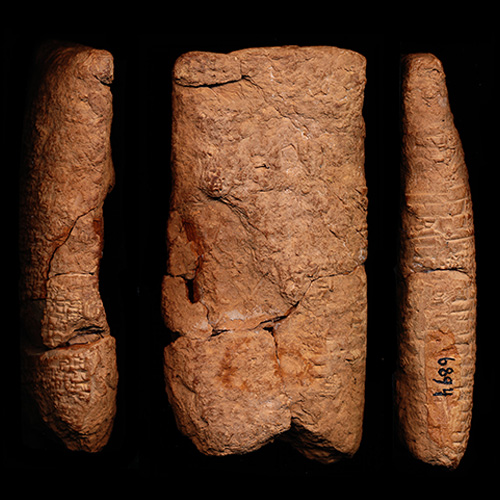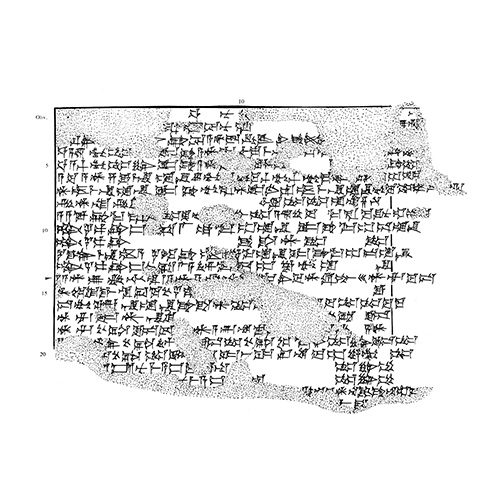About
Access
Read for free
External sources
- Sorry, we can't seem to find this resource online.
Primary
Myth
Inanna descends from the great above to the great below. She abandons several temples and heads for open country. She gives precise instructions to her companion—Ninsubur: Inanna says "if I don't return in three days, go to the temples and plead on my behalf." At the netherworld she enters and goes through seven gates before she is turned into a corpse. Ninsubur follows the instructions and tells Inanna's father Enkil what happened. He helps her by sending two a-sexual creatures to sneak in and bring her back to life. Once Inanna is alive she ascends while being escorted by demons from the netherworld. The demons allow her to trade her husband Dumuzi in her place.
Belief system
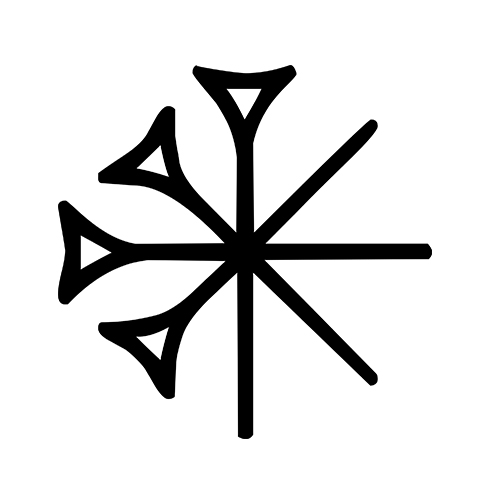
Sumerian religion refers to spiritual beliefs practiced from ca. 4500-1900 BCE in Mesopotamia, or modern-day southern Iraq. Many deities were diffused into other Mesopotamian cultures.
Deity

Inanna (Sumerian: 𒀭𒈹) was one of the oldest deities in the Sumerian pantheon. She was later adapted into the Akkadian pantheon of deities under the name Ištar.
Translation
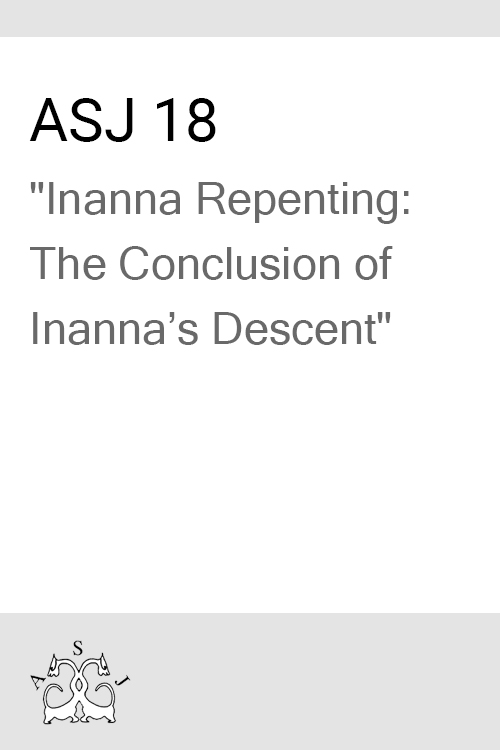
"Inanna's Descent, Ending" is an English translation of the ending of the Inanna's Descent to the Netherworld Sumerian afterlife myth. It was published in 1996 by Bendt Alster. The translation is from Sumerian cuneiform to English, across two pages, and composed of twenty-eight lines (lines 385-413). The translation is mainly based on an artifact named CBS 6894.
Myths cited
It looks like only the main myth was referenced in this work.
Belief systems cited
It looks like only the main belief system was referenced in this work.
Primary
Artifacts cited
Library works
Contributor

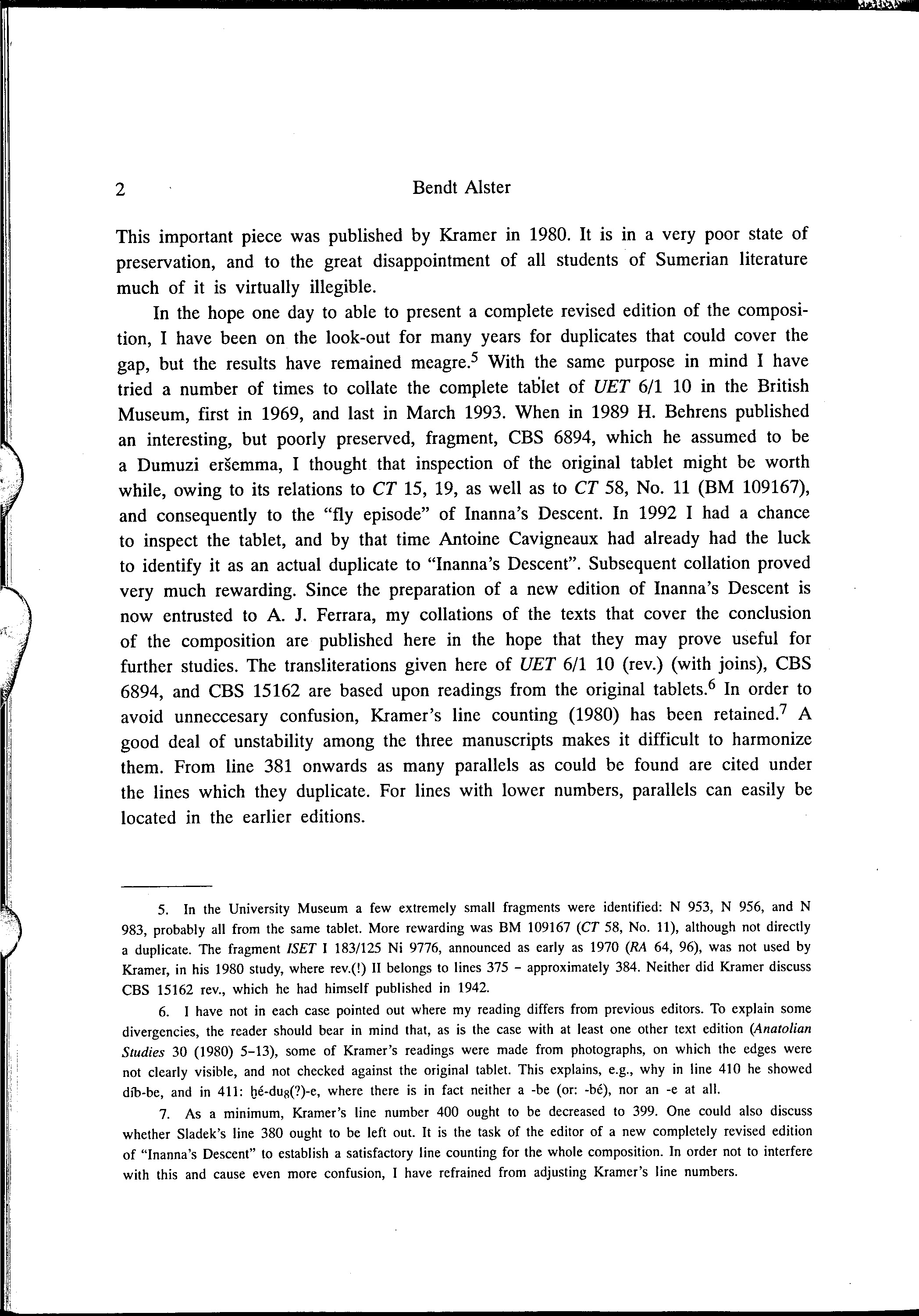


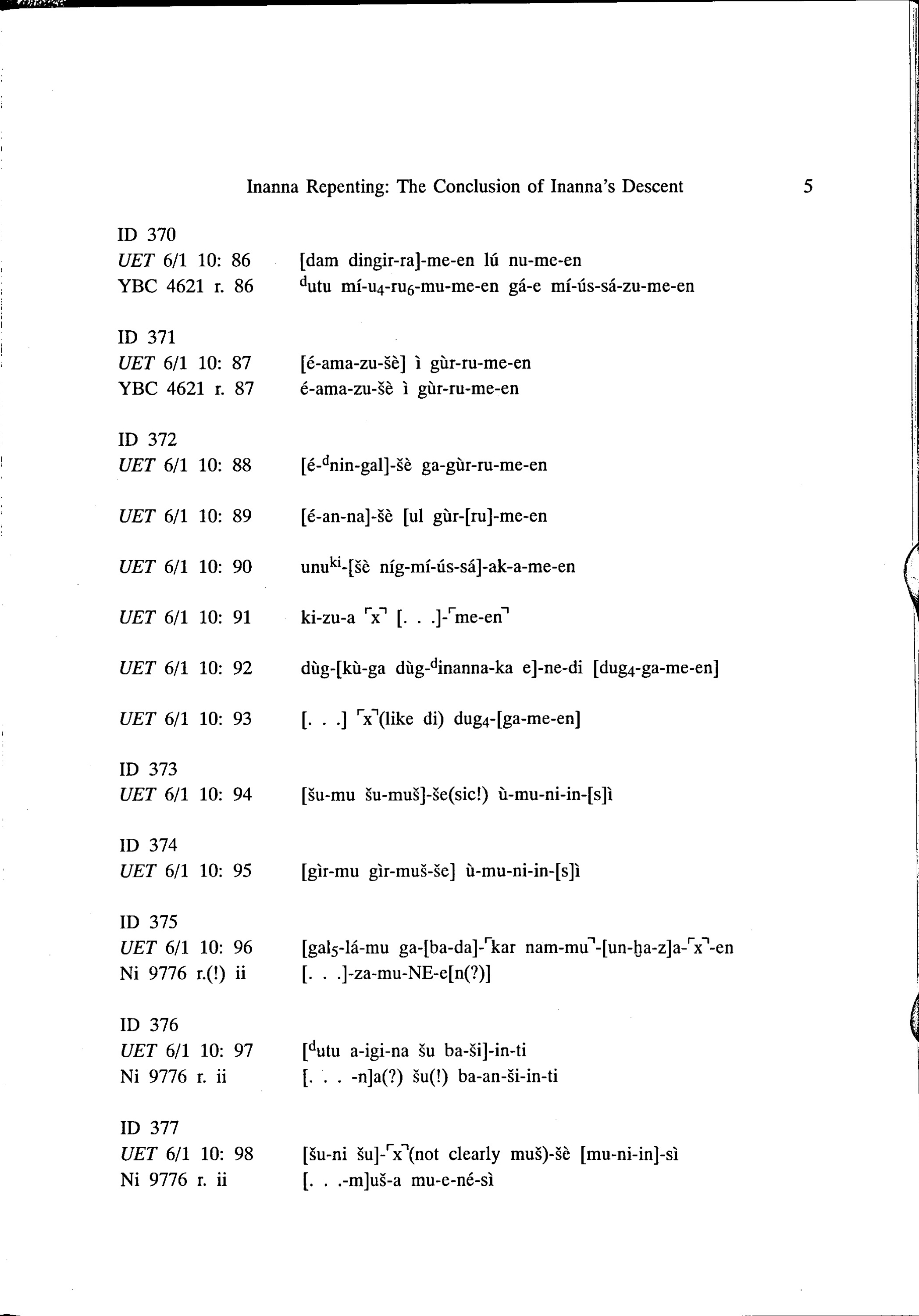
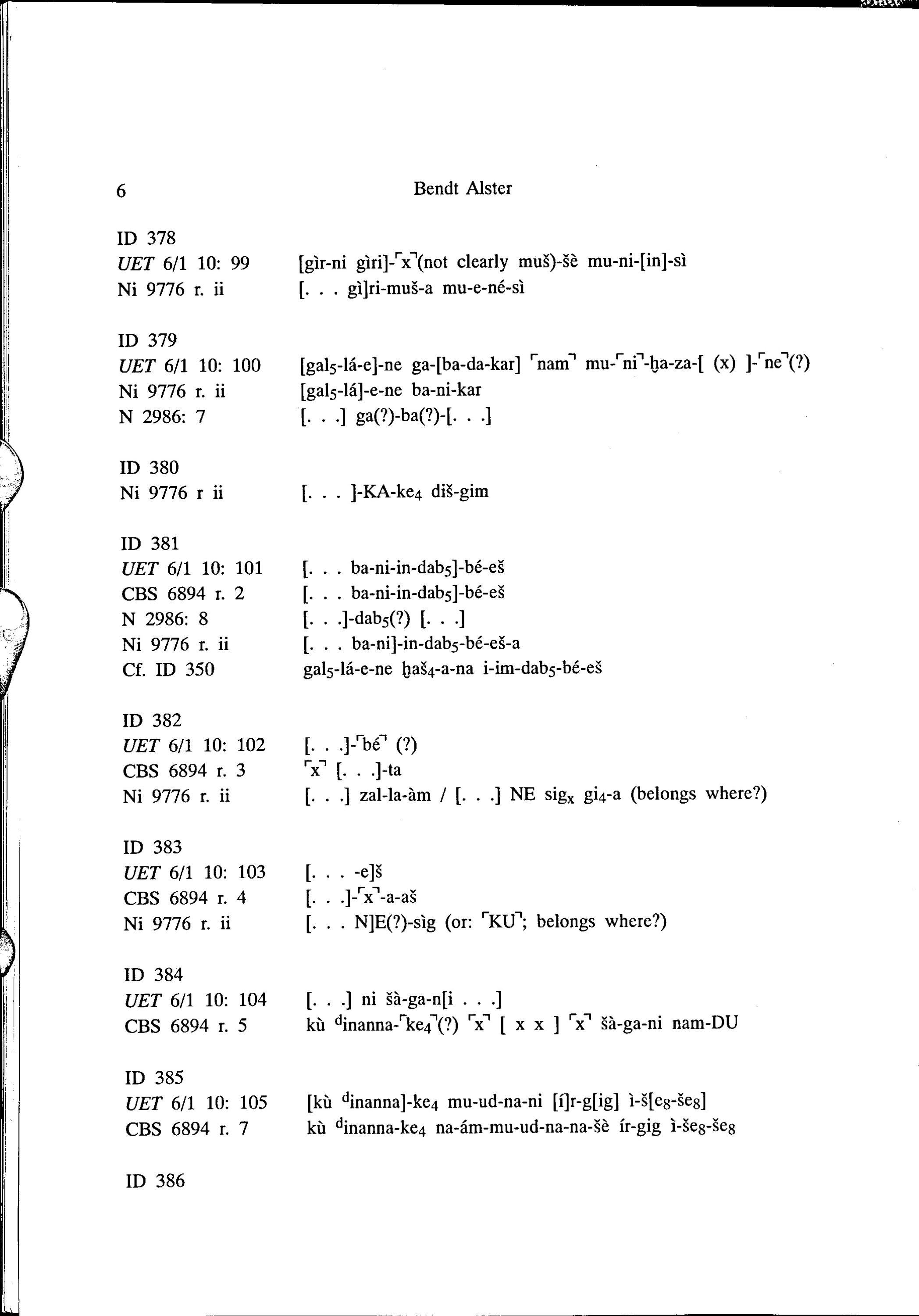


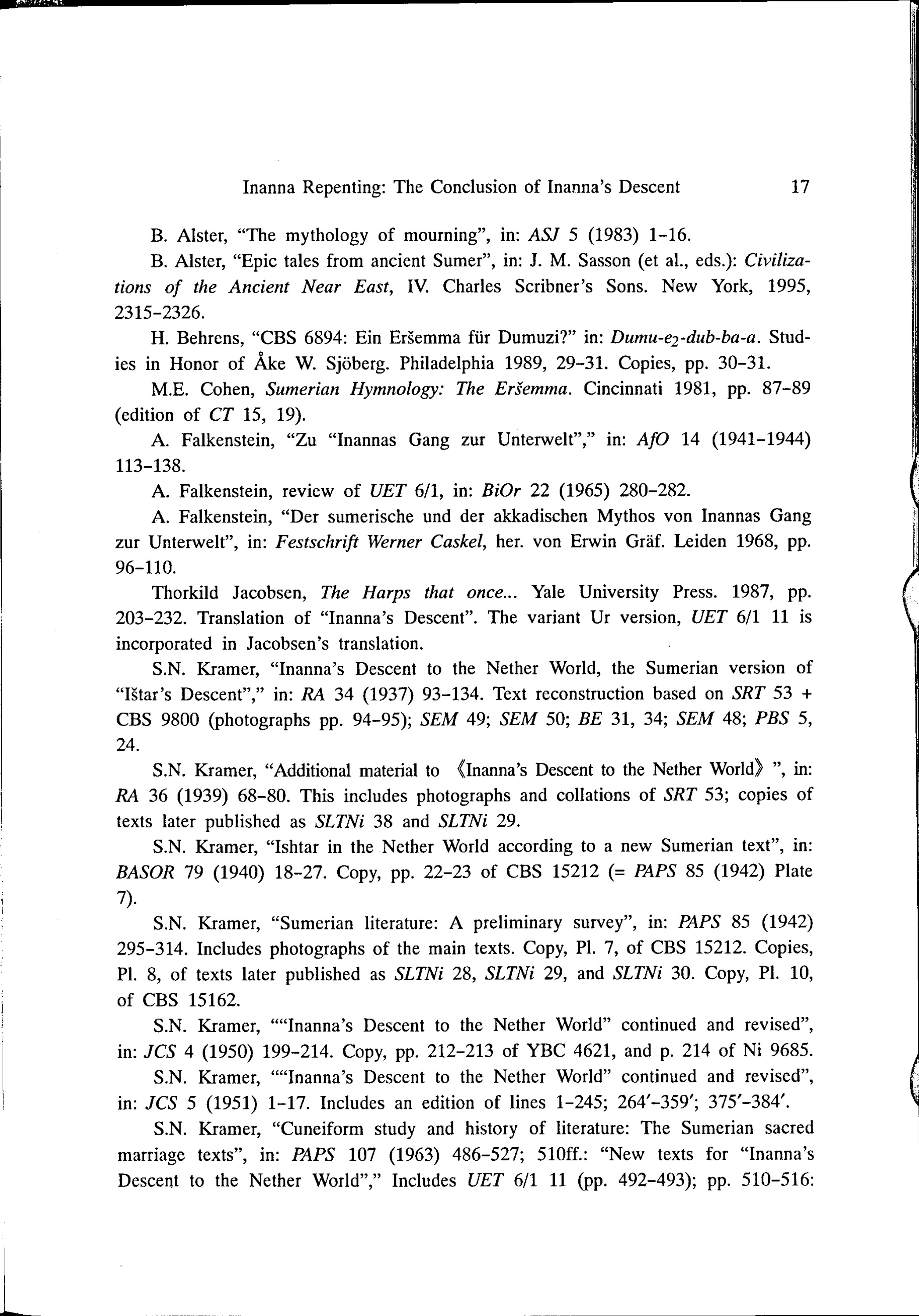
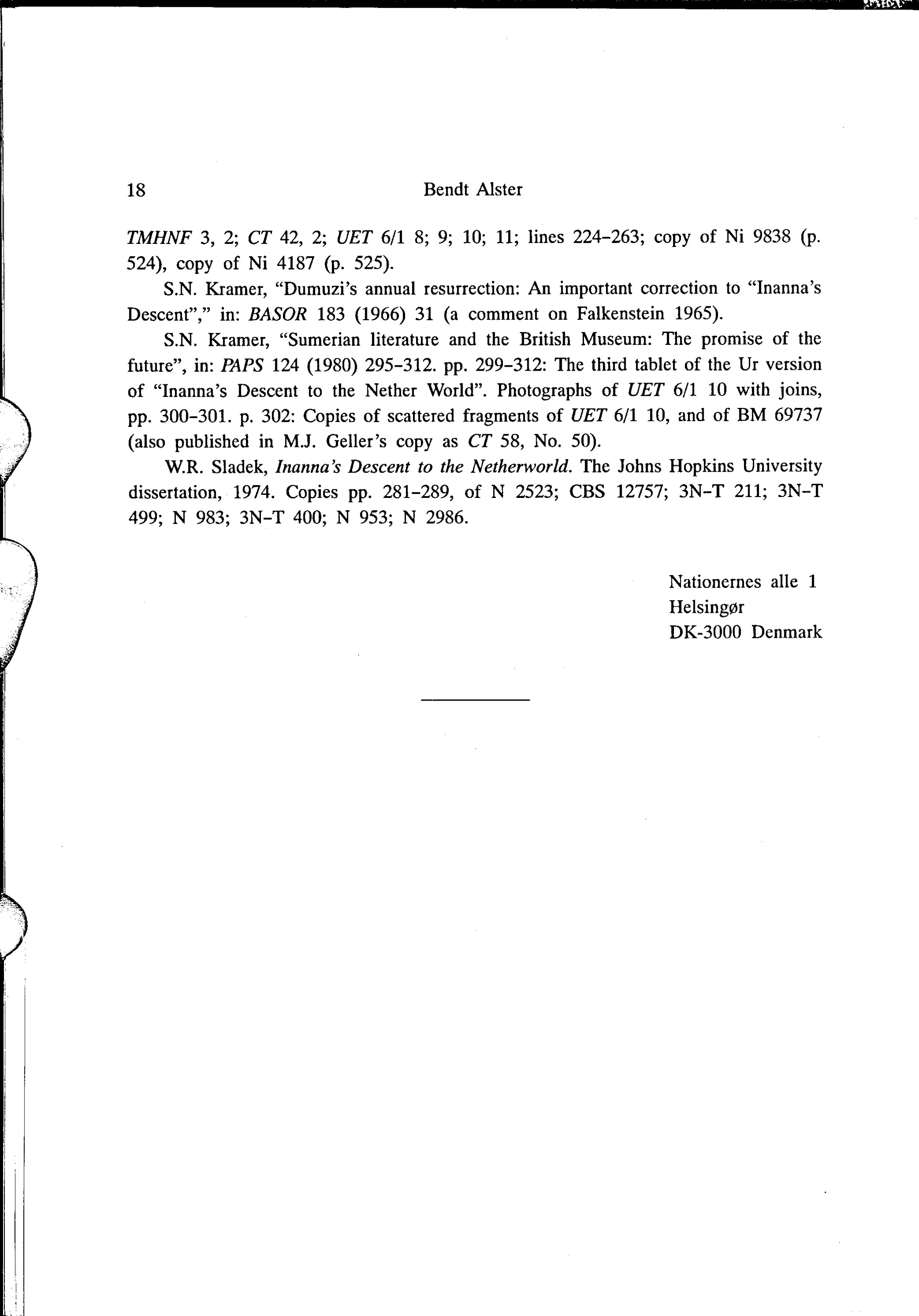
Cite this work
ChicagoAlster, Bendt. "Inanna Repenting: The Conclusion of Inanna’s Descent." Acta Sumerologica 18 (1996): 1-18.
